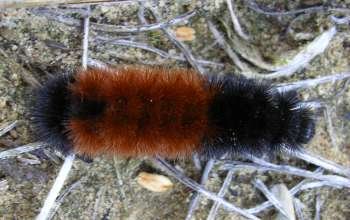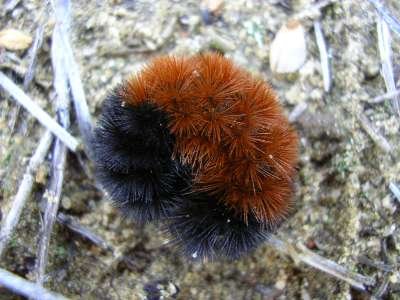The caterpillar of the Isabella Tiger Moth (Pyrrharctia isabella) steps up. The proportion of orange to black predicts the coming winter, it's said. Is it reliable? Well, sure. At least as reliable as the human professionals. There are a number of other indicators in the natural world to consult. High cones on the evergreens, lots of snow, for example. The spruces around here have produced substantial cone crops, all very high. So, spruce trees say the weather professionals have the precipitation wrong (oh, I hope the trees are right--last winter was much too dry), while the caterpillars are saying they have the temperature right. White cedar cones, also plentiful, are right to the bottom of the trees, as are the juniper berries. Insignificant? Or disputing the spruce trees' prediction?

Lots of orange, hardly any black: a mild winter, could Environment Canada be right?!? On reflection, lots of orange, and hardly any black at the back end, normal amount of black at the front. Perhaps a more nuanced prediction than I can read.







2 comments:
We were just talking about woolly bears today- we haven't seen any yet. As kids, we would pluck handsful of them off of the road and then hold them waiting for them to uncurl and crawl up our arms. Tickly!
very interesting post. It often seems to me that we have become so distanced from the events in the natural world that we really have lost our ability to read what is going on right in front of us. I've seen a few woolly bears but didn't stop to play with them as I did as a child. Maybe it's time to go play!
Post a Comment